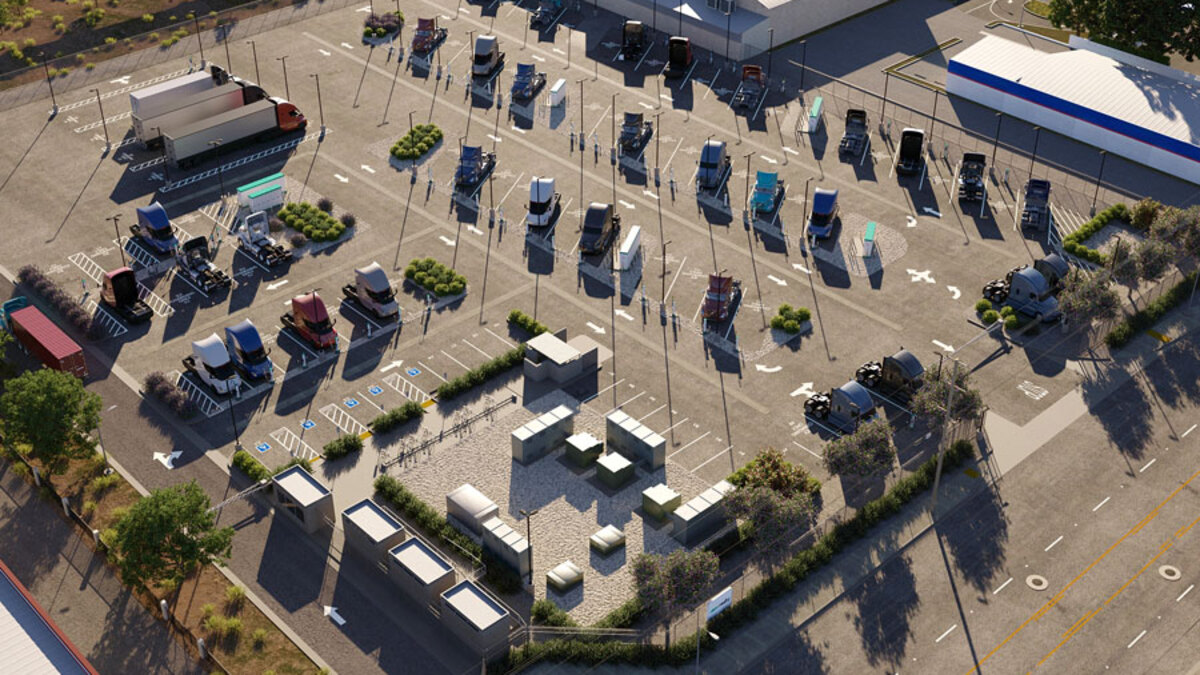
“When we started the company, we built a set of proprietary data science tools—now a full software program—which at this point is probably a couple hundred different data sets, but it started with full mapping of the distribution power system in Southern California,” Sullivan said. This approach allows the company to identify areas with adequate power capacity near critical freight infrastructure.
The San Bernardino facility will be the largest grid-connected charging project in the country, with no backup generation required due to the ample grid capacity identified through EV Realty’s site selection process.
The project has received funding support from the South Coast Air Quality Management District and was selected for a conditional award from the EnergIIZE Commercial Vehicles Project, funded by the California Energy Commission.
The company’s business model focuses on private, dedicated facilities for commercial fleets rather than public truck stops. Customers typically sign multi-year contracts for dedicated portions of the property, with EV Realty providing full maintenance of both chargers and facilities.
“If a truck’s not moving, they’re not making money, and a truck that’s sitting still or has to wait for charging or has to go through a clumsy reservation or has to use a credit card, or all those things add friction. And for any company in my space to any fleet in my space, to make the switch, it has to be easy. It has to be able to let them do the same for less money or more for the same money, and any point of friction you add, especially at the driver level, is a real challenge,” Sullivan added.
Sullivan maintains that the long-term trend toward fleet electrification remains strong, particularly where the economics make sense.
“Despite the challenges, the long-term trend toward fleet electrification is unmistakable,” Sullivan noted, emphasizing that the economics are already working for some customers. “We’re seeing real customers moving real freight, not just potato chips, winning freight at market rates and operating at a positive margin to their competitors.”



